In the heart of the wilderness, where the waters cascade with gentle grace, there exists a timeless dance between angler and current. It’s a symphony of patience and precision, where every movement is imbued with purpose, and every cast is a whisper to the river’s soul. This is the art of drift fishing—a harmonious union between man and nature, where anglers allow their bait or lure to drift naturally with the current, covering a wide area as they move downstream.
Understanding Drift Fishing
Drift fishing is more than just a technique; it’s a philosophy—a way of surrendering to the rhythm of the river and allowing its currents to guide the angler’s journey. Unlike other methods that rely on stationary bait or aggressive retrieval, drift fishing embraces the ebb and flow of the water, presenting a natural and irresistible presentation to wary fish below.
Choosing the Right Gear
To embark on a successful drift fishing expedition, one must first equip themselves with the proper tools of the trade. A flexible rod, a smooth reel, and a sturdy line are essential components of any angler’s arsenal. Additionally, selecting the right bait or lure is crucial, as it must mimic the movements of natural prey to entice even the most discerning of fish.

Locating Ideal Drift Fishing Spots
The key to successful drift fishing lies in finding the perfect stretch of river or stream. Ideal conditions include moderate current flow, ample cover for fish to hide, and deep pools where they can seek refuge. By understanding the nuances of the water and the behavior of the fish that inhabit it, anglers can maximize their chances of a fruitful outing.
Targeted Species
Salmon, trout, and steelhead are among the most coveted prizes for drift anglers, their elusive nature and powerful fights making them the ultimate challenge. These species are often found in cold, clear waters, where they feast on insects, baitfish, and other aquatic delicacies swept along by the current. By mastering the art of drift fishing, anglers can unlock the secrets of these elusive giants and experience the thrill of a lifetime.
Mastering the Art of Drift Fishing
Controlling the drift of bait or lure is both an art and a science, requiring finesse and intuition. Anglers must learn to read the water, adjusting their techniques and presentation to match the speed and depth of the current. By varying the angle of their cast and the rate of retrieval, they can manipulate their offering in ways that mimic natural movement, increasing their chances of a strike.
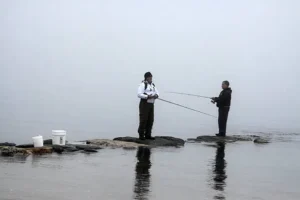
Safety Considerations
While drift fishing offers a unique and rewarding angling experience, it’s not without its risks. Fast-flowing rivers and unpredictable currents can pose hazards to even the most experienced anglers. It’s essential to wear appropriate safety gear, including a life jacket and sturdy wading boots, and to exercise caution when navigating unfamiliar waters.
Environmental Awareness
As stewards of the environment, anglers have a responsibility to practice responsible fishing techniques and minimize their impact on fragile ecosystems. By adhering to catch-and-release practices, respecting wildlife habitats, and following local regulations, anglers can ensure that future generations will be able to enjoy the beauty and abundance of our natural world.
Experiencing the Serenity of Drift Fishing
Beyond the thrill of the catch lies a deeper, more profound connection with nature. Drift fishing offers anglers an opportunity to escape the hustle and bustle of modern life and immerse themselves in the tranquility of the natural world. Whether it’s the gentle lap of water against the hull of a boat or the rustle of leaves along the riverbank, there’s a serenity to be found in the simple act of casting a line and letting the current carry it away.
Sharing the Joy of the Catch
Perhaps the greatest joy of drift fishing is the camaraderie it fosters among fellow anglers. There’s something inherently bonding about sharing a quiet stretch of river with like-minded souls, swapping stories of the ones that got away and celebrating each other’s successes. In a world that often feels divided and disconnected, drift fishing offers a rare opportunity to come together in pursuit of a common passion.
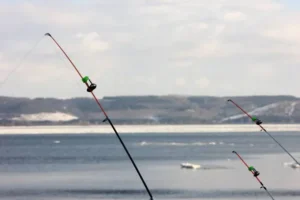
Preserving Traditions and Heritage
Drift fishing is more than just a sport; it’s a tradition—a timeless ritual that has been passed down from generation to generation. From the earliest pioneers who cast their lines into pristine mountain streams to the modern-day anglers who ply the waters of our urban rivers, drift fishing represents a connection to our past and a promise to our future. By honoring the legacy of those who came before us and sharing our knowledge and passion with the next generation, we ensure that the art of drift fishing will endure for years to come.
Overcoming Challenges
Like any pursuit worth undertaking, drift fishing is not without its challenges. From unpredictable weather patterns to finicky fish, anglers must be prepared to adapt and persevere in the face of adversity. Yet it is in these moments of struggle that the true beauty of drift fishing reveals itself—the satisfaction of overcoming obstacles and the joy of a hard-won victory.
Embracing the Journey
In a world obsessed with instant gratification and quick fixes, drift fishing offers a refreshing change of pace. It’s not about the destination; it’s about the journey—the moments of quiet reflection, the bonds forged with fellow anglers, and the memories that last a lifetime. Whether you’re casting a line into a remote mountain stream or drifting along a bustling urban river, the essence of drift fishing lies not in the fish you catch but in the experiences you share along the way.

Connecting with Nature
At its core, drift fishing is about more than just catching fish; it’s about forging a deeper connection with the natural world. It’s about learning to see the beauty in the subtle dance of sunlight on water, the delicate flutter of a mayfly on the breeze, and the silent majesty of a heron in flight. In a world that often feels disconnected from the rhythms of nature, drift fishing offers a rare opportunity to slow down, unplug, and reconnect with the world around us.
Conclusion
In the end, drift fishing is about surrendering to the flow of nature and embracing the beauty of the journey. It’s about casting aside the distractions of modern life and immersing ourselves in the timeless rhythms of the river. Whether you’re a seasoned angler or a novice enthusiast, there’s something magical about the simple act of casting a line and letting the current carry it away. So next time you find yourself longing for adventure, why not heed the call of the river and embark on your own drift fishing odyssey? Who knows what wonders await you just around the bend.
Unique FAQs
- Is drift fishing only suitable for experienced anglers? Not at all! While drift fishing does require a certain level of skill and technique, it’s also accessible to beginners. With practice and patience, anyone can learn to master the art of drift fishing.
- What’s the best time of year for drift fishing? The optimal time for drift fishing can vary depending on the species you’re targeting and the location you’re fishing in. Generally, spring and fall are prime seasons for salmon and steelhead, while trout can be caught year-round in many areas.
- Do I need special equipment for drift fishing? While specialized gear can enhance your drift fishing experience, it’s not strictly necessary. A basic rod, reel, and line setup, along with a selection of appropriate bait or lures, will suffice for most drift fishing excursions.
- How can I improve my drift fishing skills? Practice is key! Spend time on the water experimenting with different techniques and observing how fish react to your presentations. Don’t be afraid to seek advice from more experienced anglers or invest in instructional resources to hone your skills.
- Is drift fishing environmentally sustainable? When practiced responsibly, drift fishing can be a sustainable and eco-friendly angling method. By following catch-and-release guidelines, respecting wildlife habitats, and minimizing your environmental impact, you can enjoy the thrill of drift fishing while also preserving the natural beauty of our rivers and streams.



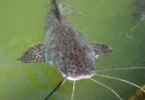
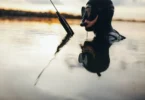
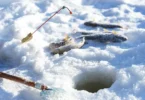
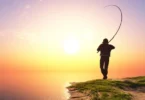

Leave a Comment